

The Harbinger of Spring: Plum Blossoms
|
Cherry blossoms may be the flower many first think of when it comes to springtime in Japan, but did you know that there is another diminutive blossom that is associated with this season? Plum blossoms (or ‘ume’ in Japanese) begin to unfurl their petals at the beginning of spring, leading it to be considered harbingers of the season and a beautiful signal to the end of winter.
It is easy to mistake plum blossoms for cherry blossoms, or vice versa, but there are some simple ways to tell these blossoms apart. The shape of the flower petals, for example, can help differentiate a plum blossom from a cherry blossom; plum blossom petals tend to be round, whereas cherry blossom petals tend to be round with a cleft at the tip. Also, though plum and cherry blossoms can both bloom in various shades of pink and white, only plum blossoms can bloom in darker hues of pink, red, and purple. Plum blossoms also bloom much earlier than cherry blossoms. It is best viewed in late February and early March, while cherry blossoms usually peak from late March to mid-April. |
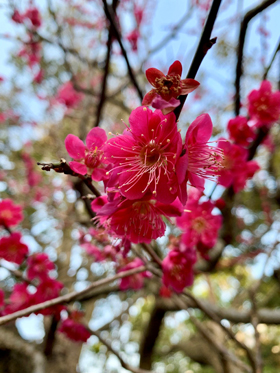 © JCC |
| With blossoms so beautiful they rival that of the cherry blossom, it is no wonder that the plum blossom hold a special place in the hearts of many Japanese. Sugawara no Michizane was a scholar, poet, and politician who lived in Kyoto during the ninth-century, and was known to have a deep appreciation for plum trees. When he was exiled to Kyushu, he was forced to leave behind a beloved pink plum tree and even dedicated a farewell poem to it: “When the east wind blows, / emit thy perfume, plum-blossom; / Because thy master is away, / forget not the spring.” According to legend, this plum tree missed Sugawara no Michizane so much that it flew to Kyushu to be reunited with him! | 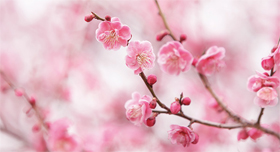 © amanaimages Inc. |
| After his passing, Sugawara no Michizane was deified as Tenjin, the Shinto god of scholarship. Knowing his love for plum trees, shrines dedicated to him are usually planted with many of his favourite trees. Dazaifu Tenmangu Shrine in Fukuoka, a shrine that was built over his grave, is now a renowned plum blossom viewing spot in Japan, with nearly 6000 plum trees on its grounds. It is these plum blossoms that oversee the many students who come to the shrine to pray to the god of scholarship for good results; coincidentally, the plum blossom season happens to be around the same time students sit for their university entrance exams. | 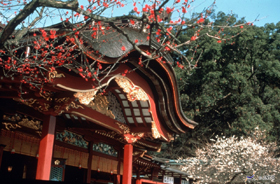 © JNTO |
| Japan entered a new era “Reiwa” in April 2019. This name of the new era originates from Manyoshu, Japan’s oldest known poetry collection that dates back to the Nara Period (710-784). “Reiwa” is comprised of two characters 令 and 和. These characters were taken from one poem from Manyoshu, which is translated as “It is now the choice month of early spring; the weather is fine, the wind is soft. The plum blossoms open - powder before a mirror; the orchids exhale - fragrance after a sachet.” This poem is believed to have been made at a plum viewing party held at Dazaifu Tenmangu Shrine in Fukuoka. | 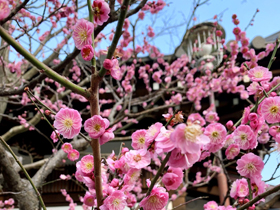 © JCC |
| Although they can be ornamental plants, plums are also loved for their flavour and fragrance and are used by Japanese people to make umeboshi (pickled plums) and umeshu (plum wine), for example. A versatile food item, umeboshi can be eaten as a snack, wrapped in rice balls, or topped on a steaming bowl of rice. Umeshu, a plum liquor made with sweet green plums, is a popular refreshing beverage that can be enjoyed chilled in the summer or hot in the winter. Recently, unique items such as plum-flavoured potato chips have been developed! | 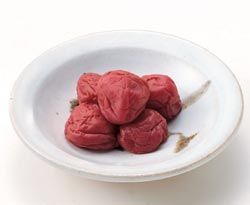 © Web Japan |
|
The sights and tastes of the plum blossom season can be enjoyed at various plum blossom festivals that take place across Japan. Visitors can enjoy the sight of plum trees in bloom in gardens like the Kairakuen in Ibaraki Prefecture, where there are over 3000 plum trees on the grounds. Plum festivals can also be found in the middle of cities like Tokyo, at the Bunkyo Plum Festival, held at the Yushima Tenmangu Shrine in Tokyo, and Kyoto, at the Kitano Tenmangu Shrine. As mentioned earlier, Fukuoka’s Dazaifu Tenmangu Shrine also ranks highly as a must-see spot!
So, the next time you are in Japan in the springtime, remember to keep an eye out for plum blossoms as well! |
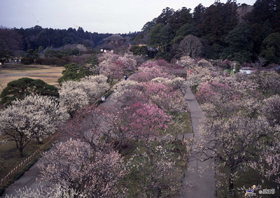 © JNTO |
Resources
|
Deitz, P. (2008). Plum Blossoms: The Third Friend of Winter. SiteLINES: A Journal of Place, 4(1), 3-5. Retrieved March 2, 2020, from www.jstor.org/stable/24889319 |
|
Japan Creative Centre 4 Nassim Road, Singapore 258372 +65 6737 0434 / jcc@sn.mofa.go.jp http://www.sg.emb-japan.go.jp/JCC Nearest parking at Orchard Hotel & Delphi Orchard |
 |